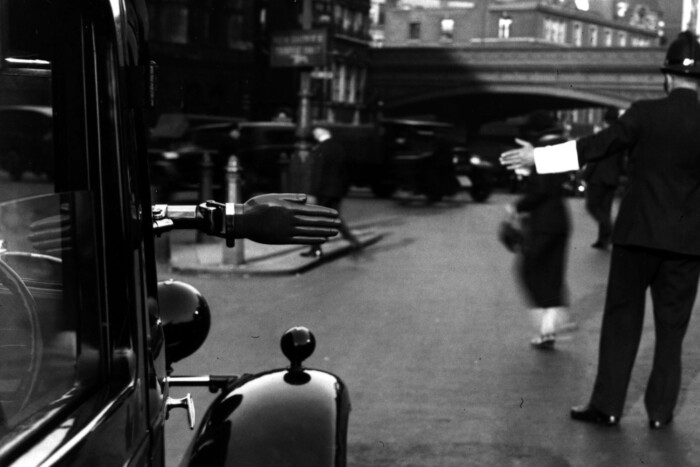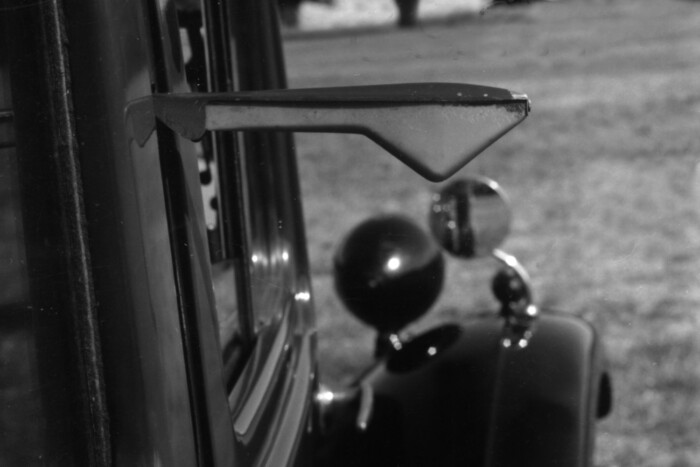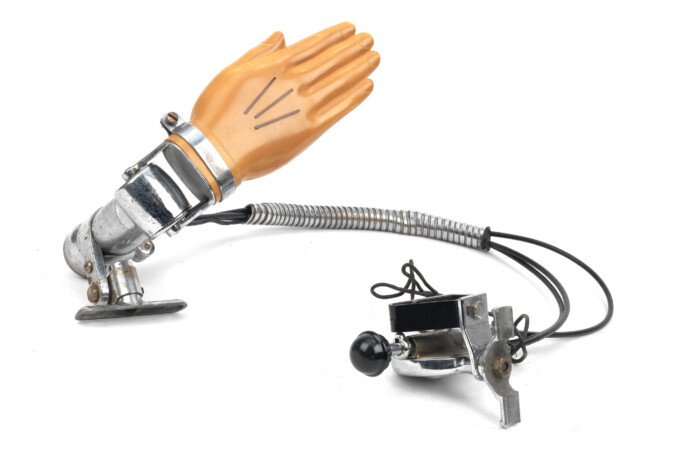In the heyday of motoring, the 19th and 20th centuries. at the turn of the 20th century, there were no regulations or even a technical solution for signaling the change of direction of cars, drivers and conductors simply signaled their fellow road users with a hand signal to change direction in one direction or another, just as cyclists do to this day.
Kép: Keystone View Company/FPG/Archive Photos/Getty Images
Obviously, this was not always convenient or even practical, so over time they looked for other solutions. One such was the mechanical hand signal, which reworked the history into a simple mechanical structure, in which a plastic made of wood or plastic, shaped like a human hand, was moved by a switch from inside. This was patented in 1907 by the American Percy Douglas-Hamilton.

Kép: Fox Photos/Getty Images
The semaphore “indexing” took a different direction: the method began to spread in Europe from the end of the 1900s, which opened flag-shaped metal blades mounted on the A or B pillars on the corresponding side.
While the above two were mechanical solutions, the first electronic system was invented by a Hollywood silent film actress named Florence Lawrence. After he could afford to own a car by 1915, he came up with the idea: he dreamed up a device mounted on the rear bumper that raised an electronically operated signal lever on the appropriate side by pressing a button on the dashboard, while it automated the braking signal when the pedal was depressed the sign indicating the deceleration rose by itself. (Interestingly, Lawrence’s mother was also an inventor, she designed the first electronically operated windshield wipers – unfortunately, none of them patented their invention, so they didn’t see any money from them.)

Szemafor (Kép: National Motor Museum/Heritage Images via Getty Images)
The first idea for a light-based turn signal, similar to the ones still used today, was born in 1925, the American Edgar A. Walz Jr.’s patent was already about an arrow-shaped, flashing light, and a light that indicates deceleration with continuous lighting. Let’s add that, for a decade and a half, he unsuccessfully argued with the car manufacturers with his idea, and finally only in 1939, Buick cars got rear lights, and a year later, Buicks and Cadillacs already had turn signals in the front.
As for the characteristic index clicking, it also started with Buicks: the factory engineer, Joseph Bell, solved the flashing by using metal plates with different thermal expansion under the influence of electricity, i.e. a bimetallic structure, and the device produced such a sound as a result of its operation. In modern cars, of course, chips control the blinking of the amber LEDs, but the sound has remained, as it is still useful if something warns of the operation of the turn signal.
Well, back to the beginning: our article is about a hand-made turn signal, which will soon be offered by the Bonhams auction house for auction.

Image: Bonhams Cars
The Birglow-made Auto Signal was made in the 1920s and was used on British roads. All elements of the original part are present: the operating lever, the bowdens, the hand. Although they don’t expect a lot of money for it, the knock-down price is predicted to be between 100-200 pounds (approx. 50-100 thousand HUF), but whoever buys it will be able to take home an interesting piece of motoring history.
Source: www.vezess.hu


